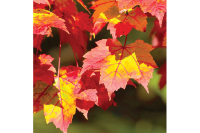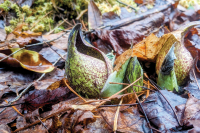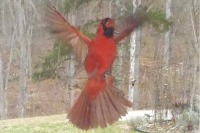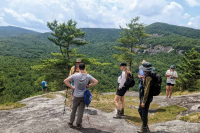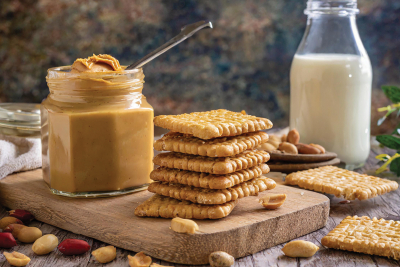Epp’s Springs were once Bryson City’s calling card
 A friend of mine who is a veteran backcountry explorer in the Smokies sent a recent email to me and others in which he noted that various lodges and hotels associated with the Great Smoky Mountains National Park “would make a good topic for a book … including such locations as the Wonderland in Elkmont, the original Cataloochee Ranch, the Swag, the ones at Tremont, below the Chimneys Picnic Area, and on the Tuckaseegee at Canebrake, as well as the one up on the Thomas Divide and the old Mountain View in Gatlinburg. I am sure there are many others but those are just the ones I can think of.”
A friend of mine who is a veteran backcountry explorer in the Smokies sent a recent email to me and others in which he noted that various lodges and hotels associated with the Great Smoky Mountains National Park “would make a good topic for a book … including such locations as the Wonderland in Elkmont, the original Cataloochee Ranch, the Swag, the ones at Tremont, below the Chimneys Picnic Area, and on the Tuckaseegee at Canebrake, as well as the one up on the Thomas Divide and the old Mountain View in Gatlinburg. I am sure there are many others but those are just the ones I can think of.”
Shelving books is a very personal task
 For awhile everything was in control. But that didn’t last. It never does. Once again my books are in total disarray. I can spend hours looking for a book I should find in a few minutes. The only good thing about this situation is that it provides an opportunity to re-shelve my books. And it gives me an excuse to reread Larry McMurtry’s books about books.
For awhile everything was in control. But that didn’t last. It never does. Once again my books are in total disarray. I can spend hours looking for a book I should find in a few minutes. The only good thing about this situation is that it provides an opportunity to re-shelve my books. And it gives me an excuse to reread Larry McMurtry’s books about books.
Devil’s Walkingstick is known as The Toothache Tree
 “The cascading, four foot, doubly-compound leaves of devil’s walking stick, bunched near the end of long crooked thorny stems reaching as tall as 20 feet, give this plant a decidedly tropical look — it’s a plant that might fit in nicely on the set of Jurassic Park.
“The cascading, four foot, doubly-compound leaves of devil’s walking stick, bunched near the end of long crooked thorny stems reaching as tall as 20 feet, give this plant a decidedly tropical look — it’s a plant that might fit in nicely on the set of Jurassic Park.
Batting away undeserved prejudice
Unfortunately, more undeserved prejudice exists about bats than any other animal, except, of course, serpents.
In European lore, vampires (a word derived from the Serbian “wampir”) were bloodsucking ghosts, dead men’s souls that siphoned blood from sleeping victims.
Celebrating the odiferous ramp
Purple rhododendron is the most admired flowering plant in the Southern Appalachians. Ginseng is the most celebrated medicinal plant. And ramps are the most sought-after culinary plant — a fact that has led to its overharvesting in the wild.
Adaptation helps plants weather the cold
As I write this on Tuesday morning there are five or so inches of snow covering the ground outside my window. The forecast on the Internet is for more snow. By Thursday there may be upwards of 10 inches.
My wife and I protect ourselves from the elements by having an artificial structure (our house) to live in. We can put on additional clothing. We keep the woodstove in the living area stoked up. Bedroom, bathroom, and office doors can be closed so as to maintain warmth in the living area. Soup is simmering in a crock pot. This is our version of hunkering down.
The butternut is a country boy’s tree
“A countryman’s tree is the Butternut, known to the farm boy but not his city cousin. One who takes thoughtful walks in the woods may come to know and admire it for the grand old early American it is.”
— Donald Culross Peattie, A Natural History of Trees (1949)
Cherokee knew how to handle the chill of winter
 “Two or more Families join together in building a hot-house, about 30 feet Diameter, and 15 feet high, in form of a Cone, with Poles and thatched, without any air-hole, except a small door about 3 feet high and 18 Inches wide. In the Center of the hot-house they burn fire of well-seasoned dry-wood; round the inside are bedsteads sized to the studs, which support the middle of each post; these Houses they resort to with their children in the Winter Nights.”
“Two or more Families join together in building a hot-house, about 30 feet Diameter, and 15 feet high, in form of a Cone, with Poles and thatched, without any air-hole, except a small door about 3 feet high and 18 Inches wide. In the Center of the hot-house they burn fire of well-seasoned dry-wood; round the inside are bedsteads sized to the studs, which support the middle of each post; these Houses they resort to with their children in the Winter Nights.”
— John DeBrahm, “Report of the General Survey in the Southern District of North America,” ed. Louis de Vorsey, Jr., (Univ. of South Carolina Press, 1971)
The creative code of old-time surveyors
 Since 1976 we’ve resided in a cove about four miles west of Bryson City. Using various old deeds my wife, Elizabeth, and I have located tree slashes, stones, stakes, etc., which delineate the cove’s boundaries. We have found that old-time Appalachian surveys and deeds can be confusing and informational and amusing at the same time.
Since 1976 we’ve resided in a cove about four miles west of Bryson City. Using various old deeds my wife, Elizabeth, and I have located tree slashes, stones, stakes, etc., which delineate the cove’s boundaries. We have found that old-time Appalachian surveys and deeds can be confusing and informational and amusing at the same time.
It’s the ‘other information’ that makes almanacs interesting
 Now is the time to make resolutions, order seeds for the coming year’s garden and buy an almanac for 2015. Just doing those things will make you feel better.
Now is the time to make resolutions, order seeds for the coming year’s garden and buy an almanac for 2015. Just doing those things will make you feel better.
My almanac of choice this year is titled “Harris’ Farmer’s Almanac for the use of farmers, planters, mechanics and all families for the year of our Lord 2015 being the first year after the bissextile, or leap year, and until the Fourth of July, the 237th year of American Independence containing the astronomical calculations for Northern, Southern and Middle States, weather forecasts, planting tables and a variety of matter useful and entertaining.”

